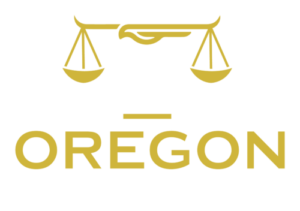ORCP 81 – Definitions; Service; Adverse Claimants
A Definitions. As used in Rules 81 through 85, unless the context otherwise requires:
A(1) Attachment. “Attachment” is the procedure by which an unsecured plaintiff obtains a judicial lien on defendant's property prior to judgment.
A(2) Bank. “Bank” includes commercial and savings banks, trust companies, savings and loan associations, and credit unions.
A(3) Clerk. “Clerk” means clerk of the court or any person performing the duties of that office.
A(4) Consumer goods. “Consumer goods” means consumer goods as defined in ORS 79.0102.
A(5) Consumer transaction. “Consumer transaction” means a transaction in which the defendant becomes obligated to pay for goods sold or leased, services rendered, or monies loaned, primarily for purposes of the defendant's personal, family, or household use.
A(6) Issuing officer. “Issuing officer” means any person who on behalf of the court is authorized to issue provisional process.
A(7) Levy. “Levy” means to create a lien upon property prior to judgment by any of the procedures provided by Rules 81 through 85 that create a lien.
A(8) Plaintiff and defendant. “Plaintiff” includes any party asserting a claim for relief whether by way of claim, third party claim, cross-claim, or counterclaim, and “defendant” includes any person against whom such claim is asserted.
A(9) Provisional process. “Provisional process” means attachment under Rule 84, claim and delivery under Rule 85, temporary restraining orders under Rule 83, preliminary injunctions under Rule 83, or any other legal or equitable judicial process or remedy which before entry of a judgment enables a plaintiff, or the court on behalf of the plaintiff, to take possession or control of, or to restrain use or disposition of, or fix a lien on property in which the defendant claims an interest, except an order appointing a provisional receiver under Rule 80 or granting a temporary restraining order or preliminary injunction under Rule 79.
A(10) Security interest. “Security interest” means a lien created by agreement, as opposed to a judicial or statutory lien.
A(11) Sheriff. “Sheriff” includes a constable of a justice court.
A(12) Writ. A “writ” is an order by a court to a sheriff or other official to aid a creditor in attachment.B Service of notices or orders; proof of service.
B(1) Service. Except where some other method is expressly permitted, any notice or order to show cause required or permitted to be served by Rules 81 through 85 shall be served in the manner in which a summons may be served.
B(2) Proof of service. Copies of all notices or orders to show cause shall be filed together with proof of service as provided in Rule 9 C.C Adverse claimants. A person other than the defendant claiming to be the actual owner of property subject to provisional process, or any interest in such property, may move the court for an order establishing the claimant’s title or interest, extinguishing the plaintiff’s lien, or other appropriate relief. A hearing upon such motion shall be conducted within 20 days after service pursuant to Rule 9. After hearing:
C(1) Summary release of attachment. In a case where there is no genuine issue as to any material fact and the claimant is entitled to relief as a matter of law, the court may make an order establishing claimant's title or interest, extinguishing or limiting the plaintiff's lien, or granting other appropriate relief. In such case, the court may enter an order directing the plaintiff to pay the claimant the reasonable expenses incurred in securing such order, including attorney fees.
C(2) Continuation of attachment. In all other cases, the court shall order the provisional process continued pending judgment. Such order protects the sheriff but is not an adjudication between the claimant and the plaintiff.[CCP 12/13/80; amended by 1981 c.883 §36; §C amended by 1981 c.883 §37; §A amended by 1995 c.658 §120; §A amended by 2001 c.445 §186; §A amended by 2003 c.576 §264]
